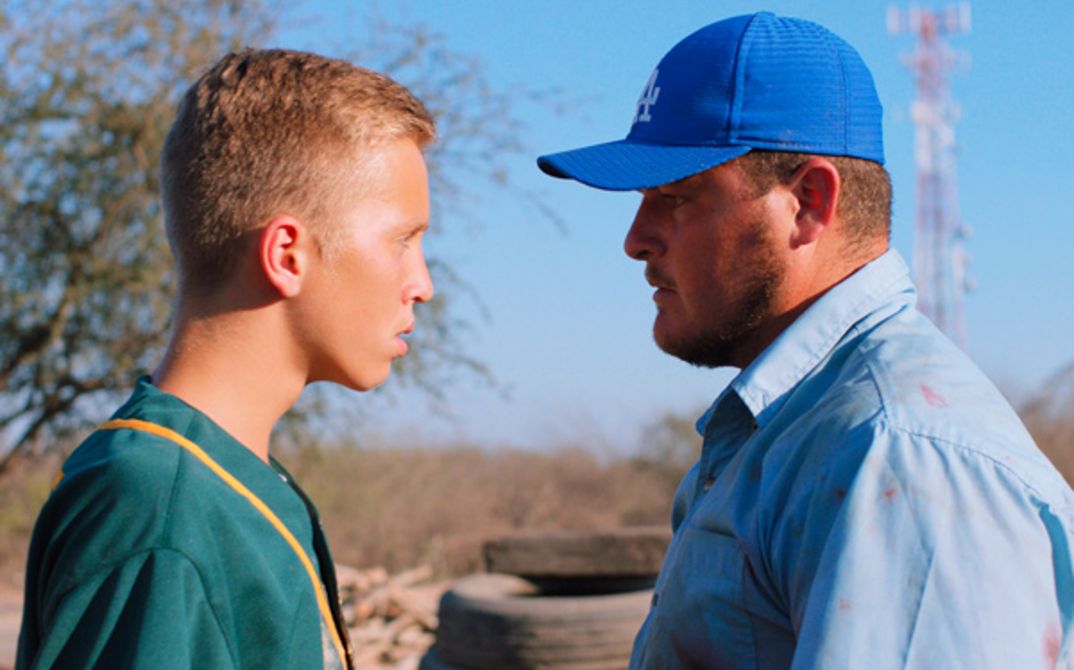Sinaloa, half-hell and half-paradise
Raúl is from Mazatlán, Mexico. As a kid, he would spend the entire day at the beach surfing and playing baseball until late at night. Nowadays the same beach is where the cartels of Sinaloa and Los Zetas dump the dismembered bodies of their victims.
Eduardo grew up going to the beaches in Anzoátegui, Venezuela, a place surrounded by beautiful keys. There was an island called The Pool where he would see all kinds of fish as he snorkelled until sunset. The last he heard about The Pool was that dozens of beachgoers were held at gunpoint by a gang of criminals who robbed and sexually assaulted them.
The Nigerian author Chris Abani asks how a place can be both half-hell and half-paradise. We constantly ask ourselves how a place can be so ugly and violent yet beautiful at the same time.
LOS DÉBILES is an ode to the brutality of Sinaloa and the tormented psyche of its people. Through our movie, we have been able to capture faces and landscapes that are unique to Sinaloa with the hope that in the near future, another person will be able to understand and appreciate characters who have long stopped existing. Inspired by Claude Lévi-Strauss’ memoirs “Tristes Tropiques”, in which he states: ‘A few hundred years, in this same place, another traveller, as despairing as myself, will mourn the disappearance of what I might have seen, but failed to see’, we’ve adventured into the depths of Sinaloa’s rural landscapes in order to be participants and get the miraculous opportunity of seeing and portraying it according to our vision.
The protagonist of our film, José Luis Lizárraga, is a twenty-year-old farmer who lives on a remote rancho and wakes up every day at four in the morning to milk cows just as his great-grandfather used to do. He has emotional scars from traumatic experiences that are typical of the turbulent times in Sinaloa. The abandoned factory in Mármol is the heart of a small town near the beach and, ever since its closure, it looks like a ghost town. Since then, it has been a sort of Korangal Valley [in north-eastern Afghanistan, the site of hard-fought battles between US troops and Taliban forces at the beginning of the war in Afghanistan in the early 2000s, –Ed.] where different criminal groups fight each other for control because of its strategic access to the sea.
The title of the movie comes from a poem written by Raúl:
Los Débiles
In your eyes a perpetual rattle takes root,
deity of the weak ones, acolyte of death.
In your senile hands, you warm us.
Where else but in your skinny bust
we must protect ourselves.
A peaceful exodus is our sentence
on board this ship.
Sing us a funeral hymn
before crossing the door.
Oral history
The plot, characters and scenes are the products of intensive fieldwork that took us to rural communities, cantinas and junkyards. We also took advantage of the oral tradition in Sinaloa. We were on the lookout for vivid characters such as cops, bartenders, truck drivers and fishermen, who told us stories about ghosts, murders and trivia about local legends: musicians, baseball players, boxing champions and corrupt politicians. One of our interviewees was the owner of a cantina who will remain anonymous. He told us tales like when he was part of the crew on a fishing ship that went to Peru to pick up a shipment of cocaine and how on the way back the engine broke down and they were stranded for days in the middle of the Pacific Ocean with tons of cocaine.
We decided that the best way to translate into images the stories and chaos we heard and saw on the street was by taking elements from the theatre of the absurd: lack of a clear plot, redundant dialogue, and nightmarish moods. The entire cast is made up of non-actors with dramatic stories of their own: the widow of a drug lord who, after a life of luxury, was now cleaning bathrooms; or an old man who was left crippled after being shot with an AR-15 by a gang who was looking for his son. We created characters that would border on the grotesque to dilute and dramatise so much insanity and death.
Our main sources of inspiration when making this film were the local crime tabloids, which have sensationalised violence and banalised death with their front covers full of gruesome pictures of beheaded people and colgados. At the same time, we look up to three of Sinaloa’s artists whose work we respect and want to emulate: the conceptual artist Teresa Margolles, whose work includes mopping the floor of the Venice Biennale with a bucket full of blood from victims of the drug war; Fernando Brito, photo-journalist, whose images of dead bodies dumped in the beautiful landscape of Sinaloa questions the way we have become desensitised to violence; and the pulp literature of Elmer Mendoza, whose protagonist, detective Edgar El Zurdo Mendieta, wanders through the underworld of Sinaloa in search of clues to long-forgotten crimes. (Raúl Rico & Eduardo Giralt Brun)
